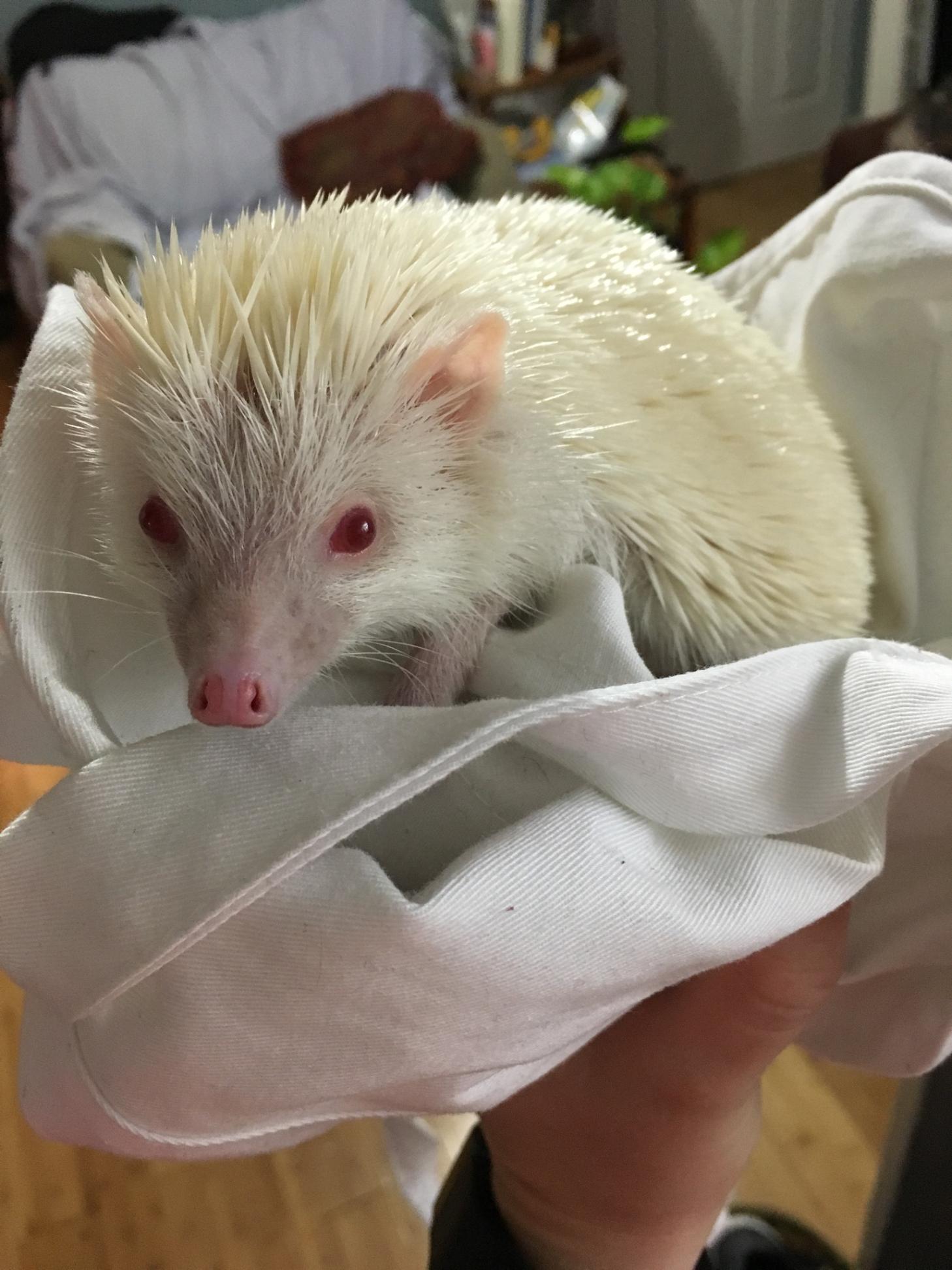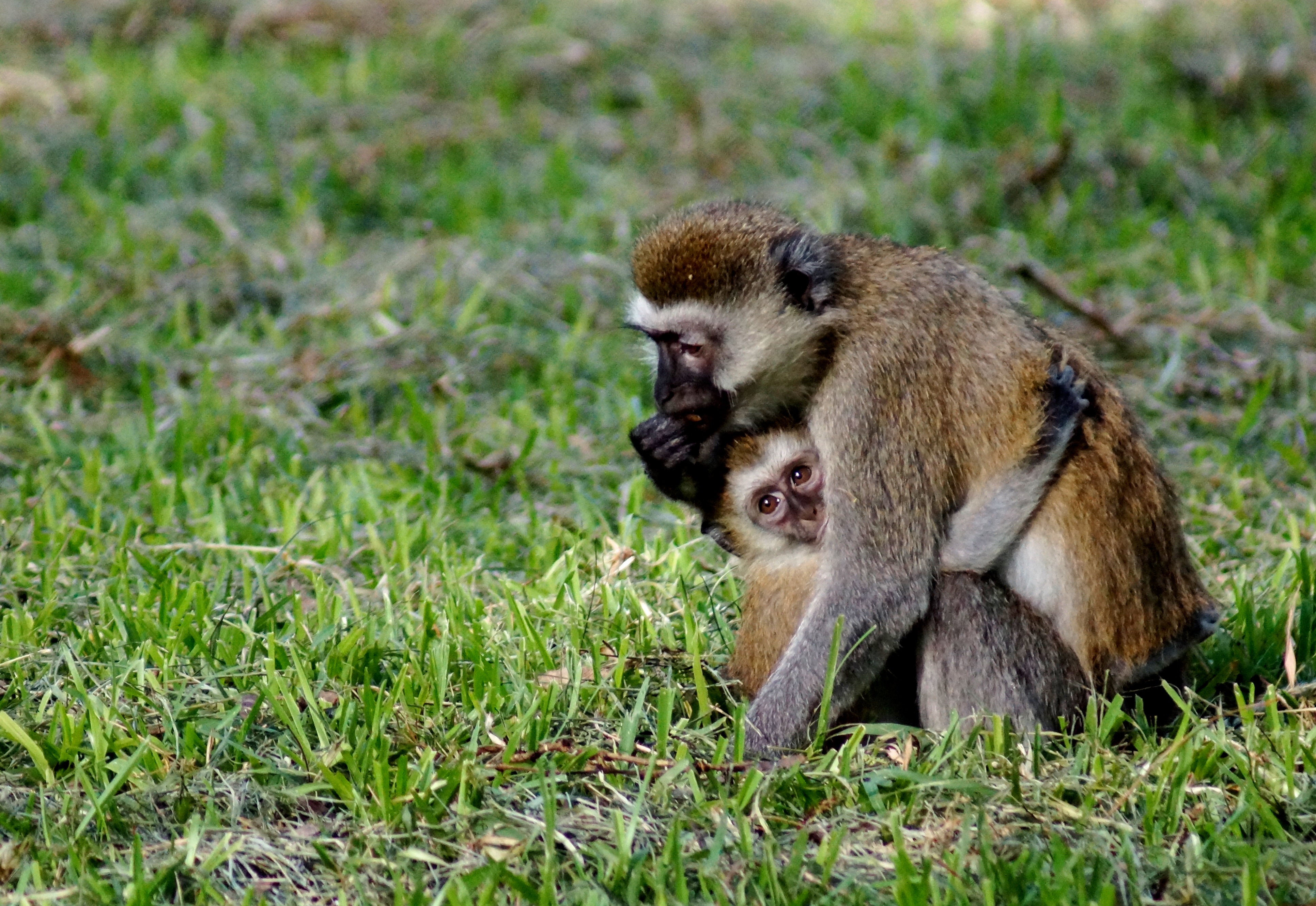|
Bennett's Wallaby
The red-necked wallaby or Bennett's wallaby (''Notamacropus rufogriseus'') is a medium-sized macropod marsupial (wallaby), common in the more temperate and fertile parts of eastern Australia, including Tasmania. Red-necked wallabies have been introduced to several other countries, including New Zealand, the United Kingdom (in England and Scotland), Ireland, the Isle of Man, France and Germany. Description Red-necked wallabies are distinguished by their black nose and paws, white stripe on the upper lip, and grizzled medium grey coat with a reddish wash across the shoulders. They can weigh and attain a head-body length of , although males are generally bigger than females. Red-necked wallabies are very similar in appearance to the black-striped wallaby (''Notamacropus dorsalis''), the only difference being that red-necked wallabies are larger, lack a black stripe down the back, and have softer fur. Red-necked wallabies may live up to nine years. Distribution and habitat Red-n ... [...More Info...] [...Related Items...] OR: [Wikipedia] [Google] [Baidu] |
Bruny Island
Bruny Island is a coastal island of Tasmania, Australia, located at the mouths of the Derwent River and Huon River estuaries on Storm Bay on the Tasman Sea, south of Hobart. The island is separated from the mainland by the D'Entrecasteaux Channel. The island and the channel are named after French explorer, Antoine Bruni d'Entrecasteaux. The island's Aboriginal name is lunawanna-allonah, from which the island settlements of Alonnah and Lunawanna are named. History Bruny Island was inhabited by Aboriginal Tasmanians people. Some people living on the island identify as being of Aboriginal descent. Abel Tasman was the first recorded European to sight the island, in November 1642 but did not determine it was an island. On 11 March 1773, Tobias Furneaux was the first British explorer to reach the island and his ship anchored at Adventure Bay (named after his ship) for four days and the crew ascertained the land was an island. Four years later, on 26 January 1777, James Cook' ... [...More Info...] [...Related Items...] OR: [Wikipedia] [Google] [Baidu] |
Bundaberg, Queensland
Bundaberg () is the major regional city in the Wide Bay-Burnett region of the state of Queensland, Australia. It is the ninth largest city in the state. The Bundaberg central business district is situated along the southern bank of the Burnett River about from its mouth at Burnett Heads, where it flows into the Coral Sea. The city is sited on a rich coastal plain, supporting one of the nation's most productive agricultural regions. The area of Bundaberg is the home of the Taribelang-Bunda, Goreng Goreng, Gurang, and Bailai peoples. The common nickname for Bundaberg is "Bundy", although its history as a major sugar producing region means it is often referenced as the "Rum City" or "Sugar City". The residents of the city are referred to colloquially as 'Bundabergians.' In the , the Bundaberg urban area had a population of 73,747 people. The district surveyor, John Thompson Charlton designed the city layout in 1868, which planned for uniform square blocks with wide main stree ... [...More Info...] [...Related Items...] OR: [Wikipedia] [Google] [Baidu] |
Canterbury Region
Canterbury () is a region of New Zealand, located in the central-eastern South Island. The region covers an area of , making it the largest region in the country by area. It is home to a population of The region in its current form was established in 1989 during nationwide local government reforms. The Kaikōura District joined the region in 1992 following the abolition of the Nelson-Marlborough Regional Council. Christchurch, the South Island's largest city and the country's second-largest urban area, is the seat of the region and home to percent of the region's population. Other major towns and cities include Timaru, Ashburton, Rangiora and Rolleston. History Natural history The land, water, flora, and fauna of Canterbury has a long history, stretching from creation of the greywacke basement rocks that make up the Southern Alps to the arrival of the first humans. This history is linked to the solidification and development of tectonic plates, the development of ... [...More Info...] [...Related Items...] OR: [Wikipedia] [Google] [Baidu] |
Albino Macropus Rufogriseus Rufogriseus
Albinism is the congenital absence of melanin in an animal or plant resulting in white hair, feathers, scales and skin and reddish pink or blue eyes. Individuals with the condition are referred to as albinos. Varied use and interpretation of the terms mean that written reports of albinistic animals can be difficult to verify. Albinism can reduce the survivability of an animal; for example, it has been suggested that albino alligators have an average survival span of only 24 hours due to the lack of protection from UV radiation and their lack of camouflage to avoid predators. It is a common misconception that all albino animals have characteristic pink or red eyes (resulting from the lack of pigment in the iris allowing the blood vessels of the retina to be visible); this is not the case for some forms of albinism. Familiar albino animals include in-bred strains of laboratory animals (rats, mice and rabbits), but populations of naturally occurring albino animals exist in the w ... [...More Info...] [...Related Items...] OR: [Wikipedia] [Google] [Baidu] |
Hobart
Hobart ( ) is the capital and most populous city of the island state of Tasmania, Australia. Located in Tasmania's south-east on the estuary of the River Derwent, it is the southernmost capital city in Australia. Despite containing nearly half of Tasmania's population, Hobart is the least-populated Australian state capital city, and second-smallest by population and area after Darwin if territories are taken into account. Material was copied from this source, which is available under Creative Commons Attribution 4.0 International License Its skyline is dominated by the kunanyi / Mount Wellington, and its harbour forms the second-deepest natural port in the world, with much of the city's waterfront consisting of reclaimed land. The metropolitan area is often referred to as Greater Hobart, to differentiate it from the City of Hobart, one of the seven local government areas that cover the city. It has a mild maritime climate. The city lies on country which was known by the l ... [...More Info...] [...Related Items...] OR: [Wikipedia] [Google] [Baidu] |
Insular Dwarfism
Insular dwarfism, a form of phyletic dwarfism, is the process and condition of large animals evolving or having a reduced body size when their population's range is limited to a small environment, primarily islands. This natural process is distinct from the intentional creation of dwarf breeds, called dwarfing. This process has occurred many times throughout evolutionary history, with examples including various species of Dwarf elephant, dwarf elephants that evolved during the Pleistocene epoch, as well as more ancient examples, such as the dinosaurs ''Europasaurus'' and ''Magyarosaurus''. This process, and other "island genetics" artifacts, can occur not only on islands, but also in other situations where an ecosystem is isolated from external resources and breeding. This can include caves, desert oases, isolated valleys and isolated mountains ("sky islands"). Insular dwarfism is one aspect of the more general Foster's rule, "island effect" or "Foster's rule", which posits that w ... [...More Info...] [...Related Items...] OR: [Wikipedia] [Google] [Baidu] |
Subspecies
In Taxonomy (biology), biological classification, subspecies (: subspecies) is a rank below species, used for populations that live in different areas and vary in size, shape, or other physical characteristics (Morphology (biology), morphology), but that can successfully interbreed. Not all species have subspecies, but for those that do there must be at least two. Subspecies is abbreviated as subsp. or ssp. and the singular and plural forms are the same ("the subspecies is" or "the subspecies are"). In zoology, under the International Code of Zoological Nomenclature, the subspecies is the only taxonomic rank below that of species that can receive a name. In botany and mycology, under the International Code of Nomenclature for algae, fungi, and plants, other infraspecific name, infraspecific ranks, such as variety (botany), variety, may be named. In bacteriology and virology, under standard International Code of Nomenclature of Prokaryotes, bacterial nomenclature and virus clas ... [...More Info...] [...Related Items...] OR: [Wikipedia] [Google] [Baidu] |
Fathead Minnow
Fathead minnow (''Pimephales promelas''), also known as fathead or tuffy, is a species of freshwater Actinopterygii, ray-finned fish belonging to the Family (biology), family Leuciscidae, the shiners, daces and minnows. The natural geographic range extends throughout much of North America, from central Canada south along the Rocky Mountains, Rockies to Texas, and east to Virginia and the Northeastern United States.Page, Lawrence M. and Brooks M. Burr (1991), ''Freshwater Fishes'', p. 129–130, Houghton Mifflin, New York, NY. This minnow has also been introduced to many other areas via bait bucket releases. Its golden, or Xanthochromism, xanthic, strain, known as the rosy-red minnow, is a very common feeder fish sold in the United States and Canada. This fish is also known for producing Schreckstoff (a distress signal). Physical description The fathead minnow in its wild form is generally dull olive-grey in appearance, with a dusky stripe extending along the back and side, and ... [...More Info...] [...Related Items...] OR: [Wikipedia] [Google] [Baidu] |
Alloparenting
Alloparenting (or alloparental care) is a term for any form of parental care provided by an individual towards young that are not its own direct offspring. These are often called "non-descendant" young, even though grandchildren can be among them. Among humans, alloparenting is often performed by a child's grandparents and older siblings. Individuals providing this care are called by the neutral term "alloparent" (or "helper"). Alloparental care encapsulates a diverse range of parenting systems across a range of animal groups and social structures. The alloparent–young relationship can be mutualistic or parasitic, and between or within species. Cooperative breeding, joint brood care, reciprocal allonursing, brood parasitism and cuckoldry represent situations in which alloparenting plays a role. This form of parenting is often seen among humans. However, it is not as popular among other species. Alloparenting is rare among classes of animals such as birds and mammals, with only ... [...More Info...] [...Related Items...] OR: [Wikipedia] [Google] [Baidu] |
Nocturnal
Nocturnality is a ethology, behavior in some non-human animals characterized by being active during the night and sleeping during the day. The common adjective is "nocturnal", versus diurnality, diurnal meaning the opposite. Nocturnal creatures generally have highly developed senses of hearing (sense), hearing, olfaction, smell, and specially adapted eyesight. Some animals, such as ferrets, have eyes that can adapt to both low-level and bright day levels of illumination (see metaturnal). Others, such as bushbaby, bushbabies and (some) bats, can function only at night. Many nocturnal creatures including tarsier, tarsiers and some owl, owls have large eyes in comparison with their body size to compensate for the lower light levels at night. More specifically, they have been found to have a larger cornea relative to their eye size than diurnal creatures to increase their : in the low-light conditions. Nocturnality helps wasps, such as ''Apoica flavissima'', avoid hunting in intens ... [...More Info...] [...Related Items...] OR: [Wikipedia] [Google] [Baidu] |
Victoria, Australia
Victoria, commonly abbreviated as Vic, is a state in southeastern Australia. It is the second-smallest state (after Tasmania), with a land area of ; the second-most-populated state (after New South Wales), with a population of over 7 million; and the most densely populated state in Australia (30.6 per km2). Victoria's economy is the second-largest among Australian states and is highly diversified, with service sectors predominating. Victoria is bordered by New South Wales to the north and South Australia to the west and is bounded by the Bass Strait to the south (with the exception of a small land border with Tasmania located along Boundary Islet), the Southern Ocean to the southwest, and the Tasman Sea (a marginal sea of the South Pacific Ocean) to the southeast. The state encompasses a range of climates and geographical features from its temperate coastal and central regions to the Victorian Alps in the northeast and the semi-arid northwest. The majority of the ... [...More Info...] [...Related Items...] OR: [Wikipedia] [Google] [Baidu] |









